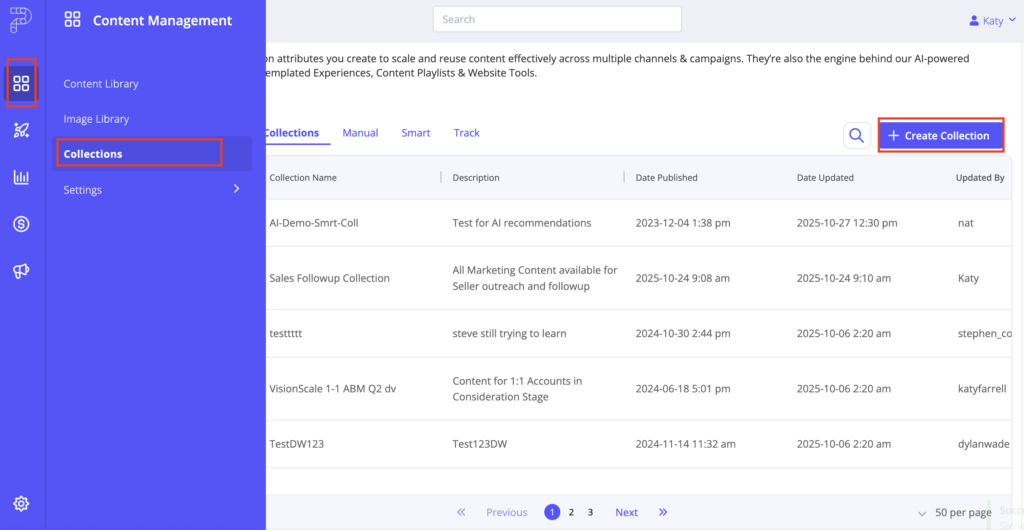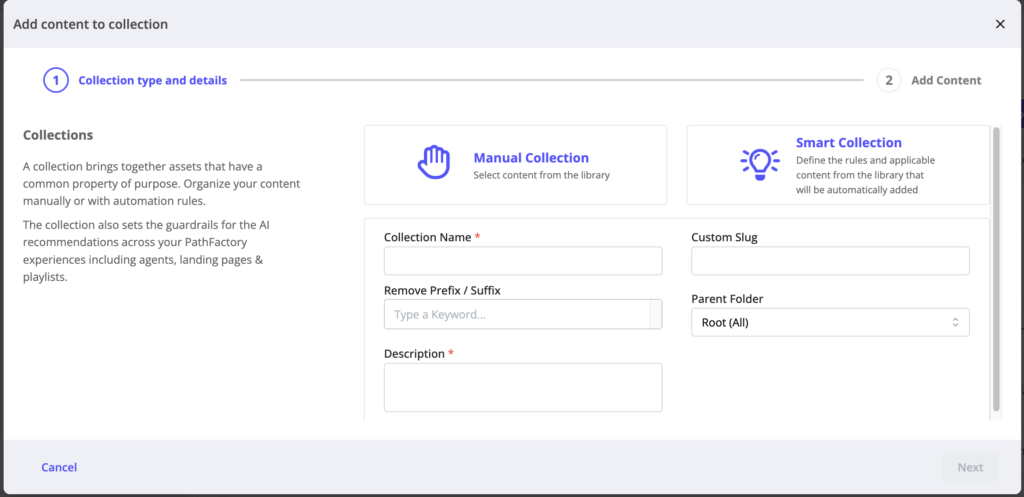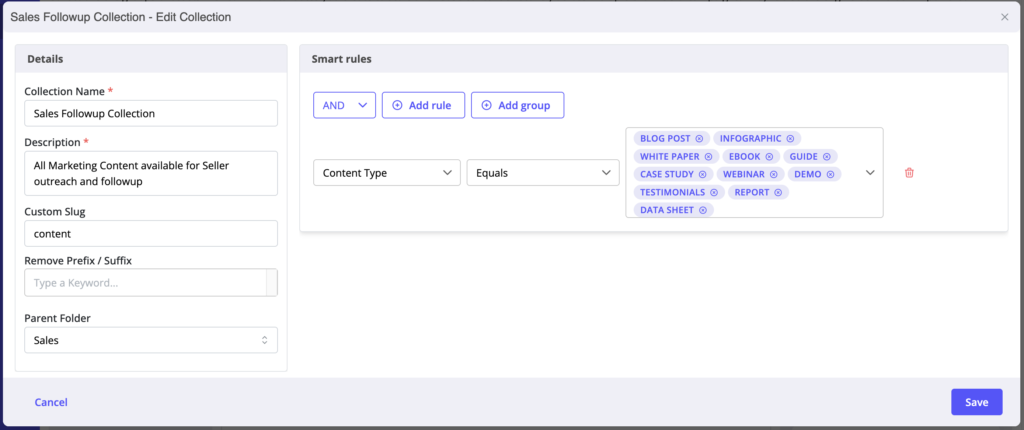Collections are groups of content assets from your Content Library. You can use a Collection inside Templated Experiences and Content Playlists, Website Tools, and Revenue Intelligence Content Plays.
1. Types of Collections
There are three kinds of Collections:
| Type | What it is | When to choose it |
|---|---|---|
| Manual | You pick each asset yourself. | When you need full control — e.g., executive decks only. |
| Smart | Assets are added automatically by rules (tags, metadata). | Best for scalable, evergreen content groups. |
| Track– LEGACY | Converts a content track into a Collection. | When you need to reuse the content from an old Track in a new Playlist or Templated Experience |
2. Create a Collection
- Go to Collections
- To begin creating a new Collection, click Create Collection.

- In the menu that appears, select the Collection Type.
- Enter the details for your Collection as follows:
- Collection Name
- Remove Prefix/Suffix – if assets are coming from your sitemap, you may want to remove a prefix or a suffix
- Custom Slug – will appear as part of the URL path for any PathFactory Content Experience
- Folder

Manual Collections
- Add Content – use search and filter to help find assets

Smart Collections
- Add filtering rules using tags, types, publish status, etc.
- Save to auto-populate matching assets

Smart Collection Rule Options
Smart Collections can be built using the following content metadata fields:
- Content Tags (including custom tag categories)
- Sitemap Source
- Content URL
- Language
- Funnel Stage
- Media Type
- Internal Name
- Public Title
- Date Published
- Date Updated
- Added By
- Last Modified (from sitemap metadata/XML)
- Expiry Date
Available Operators
Smart Collection rules support different operators depending on field type:
- Content Tags
- Equals, Doesn’t equal
- URL-based fields
- Equals, Doesn’t equal, Contains, Doesn’t contain
- Text fields
(Example: Public Title, Internal Name)- Equals or Contains
- Date fields
(Example: Date Published, Date Updated, Expiry Date)- Greater Than = After
- Less Than = Before
How to Include a Collection for a Revenue Intelligence Content Play
To find instructions on how to leverage Collections and send a Content Play from within Revenue Intelligence (PFRI), read How to Use PathFactory for Revenue Intelligence Content Plays.
How to Use Collections With Website Tools
To find instructions on how to create and use Collections within Website Tools, read Configure Sources and Collections for Website Tools.
Examples of how to use Collections in Website Tools are as follows.
- Manual Collection – a company uses a Manual Collection named “Resource Hub” to curate assets for a dedicated section on their website, ensuring a seamless and controlled user experience.
- Smart Collection – Suppose a visitor has previously shown interest in digital marketing topics, specifically email marketing and social media strategies. They have also downloaded an ebook on effective email campaigns. A Smart Collection would dynamically recommend:
- Advanced Email Marketing Guide: A resource aligned with the user’s interest in email marketing, providing advanced strategies and best practices.
- Social Media Playbook: A guide covering social media strategies, acknowledging the user’s broader interest in digital marketing.
- Webinar on Email Campaign Optimization: A recorded webinar focused on optimizing email campaigns, catering to the user’s demonstrated interest in this specific area.
Views: 637
